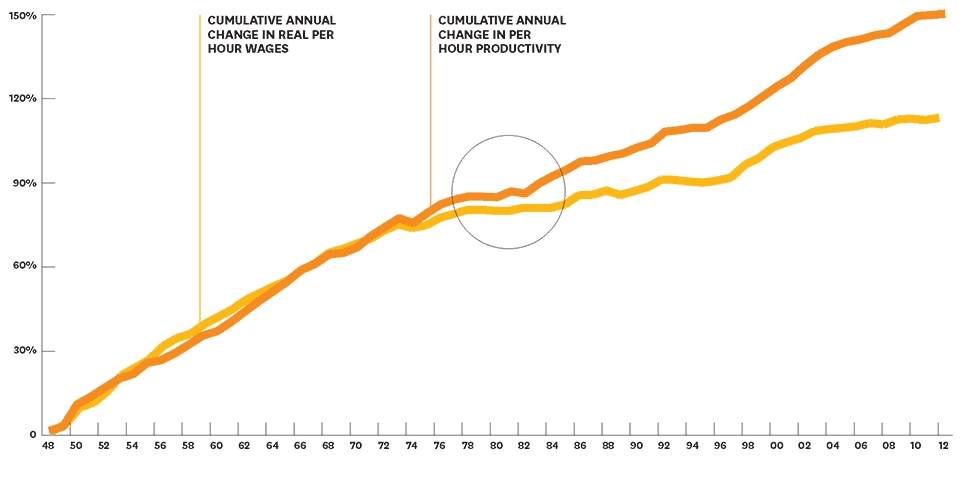Can Democrats Win Small-Town Wisconsin?
Wisconsin could decide the election and those small towns are crucial.
In an interview earlier this month, the New Yorker’s Isaac Chotiner asked David Wasserman, the US House editor for the Cook Report, to speculate about the 2020 election. Wasserman predicted that the election will be decided in six states: Wisconsin, Michigan, and Pennsylvania plus Arizona, Florida, and North Carolina. He added, “If I had to narrow it down to the two states I think will be absolutely most decisive, I would say Arizona and Wisconsin.” He added:
The tiny sliver of voters in this country who are still persuadable are not highly ideological people. They are looking for three characteristics in a candidate for President that don’t have much to do with left-versus-right. And those characteristics are authenticity, being a credible agent for change, and empathy. In other words, does this person understand my daily struggles?
Despite this reality, notably absent in the first Democratic candidate debates, was any attempt to reach out to small-town and rural Wisconsinites. Or of empathy for the economic struggles of many people who live in these areas.
Current economic research has made it clear that inequality in America has grown in recent years. The Gini index is one widely used measure of inequality. The larger the index the greater the inequality. The chart below shows the index between 1947 and 2016, the most recent year it has been published. Inequality hit its lowest points around 1970 and has grown since. An increasing number of Americans have been left behind.
Since 1980, the benefits of economic growth have gone disproportionately to those who already enjoy high incomes, as reflected in a graph included in a 2018 paper by Thomas Piketty, Emmanuel Saez, and Gabriel Zucman. The after tax income of most Americans rose less 1 percent annually while it rose two to three times more per year for the top 1 percent (P99 and above) of the country.
The next graph, based on data from Piketty, et. al., compares percentage growth over two 32-year periods: 1950 to 1982 and 1982 to 2014. The benefits of economic growth were far more widely shared in the first period (in yellow) than in the second (in green).
The next chart, from the Harvard Business Review, compares the cumulative growth in productivity (in red) with the cumulative growth in real wages between 1948 and 2012. Up until the 1970s, workers were the chief beneficiaries of productivity improvements. More recently, that has shifted so that those supplying capital have become the chief beneficiaries.
The result has been an ever wider gap between worker and executive pay. Data from the Economic Policy Institute shows the ratio of CEO to worker compensation rose from 20 times higher in 1965 to more than 300 times higher in 2017.
A number of explanations have been advanced for this shift, including automation, globalization, and economic progress in third-world countries. President Trump seems to have convinced his base that the problem is one-sided trade agreements and immigration.
In Wisconsin the 2016 election saw a shift of just enough 2012 Barack Obama supporters to Donald Trump to help the Republicans carry the state for the first time since 1988. The biggest shift, as I’ve written, was among the lowest wage earners in the least populated areas of the state, in small-town Wisconsin. Among Wisconsin counties, the stronger the swing from Obama to Trump the lower the Gross Domestic Product per capita.
These are people who may, with reason, feel they are left behind, and may be experiencing a decline in life expectancy. The Economist magazine recently made the connection explicit by publishing a scatter plot showing a strong correlation between a weighted index of health outcomes (obesity, diabetes, heavy drinking, physical exercise and life expectancy) in American counties to their shift to Trump.
Democrats can certainly argue Trump has done little for these voters. His tariffs have hurt the state’s dairy industry. His attacks on Obamacare have mostly hurt his own voters. His federal tax plan had a tremendous payout for the wealthy and little to nothing for lower wage Americans.
So Democrats can certainly argue Trump hasn’t helped rural Wisconsin. But what will Democrats offer this population, and will the candidates even address these voters and offer empathy for them? That could determine whether this state swings back to a Democrat or sticks with Trump in 2020.
Data Wonk
-
Why Absentee Ballot Drop Boxes Are Now Legal
 Jul 17th, 2024 by Bruce Thompson
Jul 17th, 2024 by Bruce Thompson
-
The Imperial Legislature Is Shot Down
 Jul 10th, 2024 by Bruce Thompson
Jul 10th, 2024 by Bruce Thompson
-
Counting the Lies By Trump
 Jul 3rd, 2024 by Bruce Thompson
Jul 3rd, 2024 by Bruce Thompson



























Democrats will be challenged to appeal to rural WI voters. Rural WI is more like West Virginia than like South Central or Southeast WI. The replacement of the family dairy farm by agribusiness and the loss of industries such as paper have diminished opportunities in rural WI. A potentially successful Democratic candidate could promise to bring back family farms and to restore the paper industry. That would be a stretch, but no more a stretch than Trump’s promise to return coal mining jobs.
A sense of isolation has increased in rural WI in recent generations. That sense of isolation makes them vulnerable to appeals from the right wing about ideological restrictions on gun ownership and such. The right wing will always win that argument, despite the fact that it makes so sense. A winning democratic candidate in rural WI would have to persuade voters there that they could improve their economic circumstances and make them feel less isolated.
wage stagnati
As far as rural Wisconsin goes (and I will throw WV into the mix since a prior comment brought that state up), Bernie Sanders beat Hillary Clinton in every single county of WI and WV with the exception of Milwaukee County. Sanders was a more authentic progressive populist than Clinton and rural counties voted for him overwhelmingly (+15 percent victory margin in both states) over Clinton. And it’s pure speculation but I think Sanders would have beat Trump in the general election. Most polls showed him handily beating Trump by a much wider margin than any other candidates. WI, MI, and PA and what is left of the manufacturing Midwest would have voted for authentic Sanders populism over Trump’s phony populism any day. The Democratic Party leadership really needs to get their act together but their ties to Corporate America rather than working people will prevent this, and insures that they will not actually be an opposition party to the GOP but a lazy, uninspiring “GOP lite” party. (Latest example, witness Pelosi’s inaction regarding the holding of impeachment hearings).